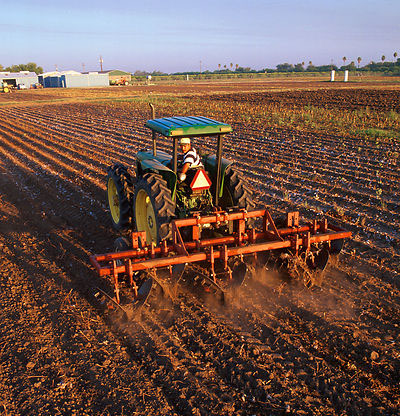Friday, October 23, 2020 - Higher yields and fewer weeds are possible if farmers sow wheat, maize, soy and other crops in more uniform spatial patterns, according to University of Copenhagen researchers. More precise sowing can also help reduce herbicide use and fertilizer runoff.
sowing can also help reduce herbicide use and fertilizer runoff.
One of the greatest challenges facing humanity is how to grow more food while reducing the negative impacts of agriculture upon the environment. Our ability to do so requires ever-more efficient and sustainable agricultural practices. The promising news is that researchers have found out that the spatial pattern in which a farmer sows their crops is an important determinant of what they will reap.
"In the vast majority of cases, higher yields and fewer weeds are the result of sowing crops in a more uniform, grid-like pattern, where each plant is equidistant from its neighboring plants, both within and between rows," says Professor Jacob Weiner of the University of Copenhagen's Department of Plant and Environmental Sciences.
Professor Weiner and his colleagues from Northeast Agricultural University in China conducted a large metastudy of research in the area to discover the impact of uniform spatial patterns on crop yields and weed growth. The study, now published in the prestigious serial Advances in Agronomy, demonstrated that a uniform seeding pattern resulted in higher yields in 76% of trials, and fewer weeds in 73% of trials.
In particular, the researchers looked at three of the world's most widely-cultivated crops: wheat, maize and soybean. In many studies, yields were roughly 20% higher, while one study yielded 60% more wheat and another, up to 90% more soybeans. With regards to weed growth, several studies resulted in more than a 30% reduction in weeds when traditional, less precise sowing was replaced by the uniform sowing pattern.
Today, a typical seeding machine sows in a fairly precise distance between rows. However, within each row, the distance between seeds is random, meaning that some plants have close neighbours, while others have distant ones.
"From an environmental perspective, it's win-win. There is less nitrogen runoff, and herbicide can be reduced because there are fewer weeds to contend with. This ability to increase yields and mitigate environmental impacts contributes to more sustainable agriculture," according to the professor.
Above ground, the uniform grid pattern is advantageous because crop plants shade one another less during the early part of the growing season. One study estimated that crop leaves covered the ground several weeks sooner when sown in a uniform sowing pattern.
"It's a bit like a forest plantation, where trees are planted in a uniform pattern. In this way, there is nothing new to this principle. It just hasn't been seen as important for crops as it is for trees. People didn't believe that a sowing pattern could have such a significant impact for crops. But we were able to conclude that it does," says Jacob Weiner.
Technically, this type of precision sowing has been a challenge.
"But now, there are machines suited for the job and new ones are constantly being developed. This applies to both precision seeders and robots. You might pay more for the machine, but it's a one-time expense that pays itself off," says Jacob Weiner.
In the vast majority of cases, an even distribution of crops within rows results in higher yields and fewer weeds. When the distance between rows is reduced as well, even greater outcomes are possible.
The study also demonstrates that uniform sowing patterns are less effective in drier areas, while more effective in wetter ones.
Learn More at This Link
